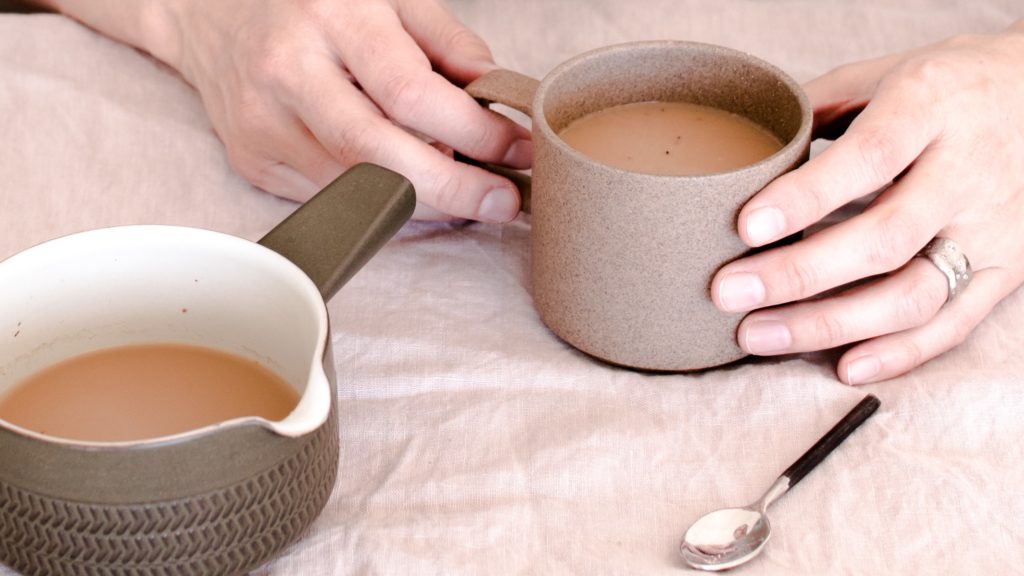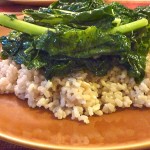
by Amy Massey, Somama Yoga and Ayurveda
As we re-emerge from lockdown, we are stepping out into the midst of changing times. The seasonal change is upon us as autumn transitions into winter and we are all navigating impacts of coronavirus in our lives and worldwide. Ayurvedic wisdom brings us back to balance with tips to soothe and strengthen body, mind, heart and soul.
Ayurveda (ayur meaning life, veda meaning knowledge) gives us a map of qualities that exist within us and in the world around us.
Using principles of nature, an Ayurvedic approach to wellness guides us to a place of balance where healing can occur naturally within our body. It inspires us to live in synergy with the solar and lunar rhythms and cyclical changes of seasons in our world. Ritucharya (ritu meaning season, charya meaning routine) is Ayurveda’s approach to maintaining wellness by aligning our lifestyles with the earth’s seasons. Each season brings us opportunities to heal and to prepare our bodies for the season to follow.
As autumn’s winds of change make way for winter, we can see and feel vata all around. Vata is an energetic force of nature governing movement. Comprised predominantly of air and space, vata is cold, dry, subtle, light, mobile, and rough. Leaves are drying, floating on cold winds from treetops through surrounding space, we hear them crunch underfoot.
As Vata’s qualities peak in our environment, vata is increasing inside of us too. In the human body, vata governs the lower abdomen and nervous system function. If vata is imbalanced, we may notice our thoughts racing, dry skin, fluctuating appetite, or irregular digestion.
Uniquely, this year’s cool change is coinciding with our re-emergence from lockdown.
We find ourselves in the midst of a very vata time. We are meeting uncertainties and rapidly evolving changes in our day to day lives. We may experience feelings of fear or anxiety stemming from messages of risk and vigilance. Or perhaps we are overwhelmed as busy-ness resumes again. As similar qualities come together, their expression is amplified. (In Ayurveda, ‘like increases like’.) So it is understandable if the landscape of our inner world speaks to us of vata prevailing in our natural environment as well as the vata-exacerbating impacts of coronavirus we are navigating in our lives and worldwide.
Take heart! For it is vata, when in balance, that brings us the powerful potential for creativity, adaptability, and healing to arise. Even in the midst of such unprecedented times, creativity is stirring and calm lingers in us. According to ritucharya, we can balance vata and stabilize ourselves with grounding and nourishing practices for autumn and early winter.
As we honour nature’s eternal rhythms, we honour our body’s internal rhythms and strengthen our constitution. Perhaps more than ever before in our lifetime, these principles of long-held wisdom can support us so that our true nature can thrive.
Here are a few ideas for vata-balancing, immune-boosting practices to ground, nourish and soothe:
- Sip warm water throughout the day (boiled then cooled).
- Eat fresh, seasonal foods. Fruit and vegetables picked as they ripen are rich in prana and offer timely support for our microbiome.
- Prepare foods warm, with a little extra moisture. Some easy to digest options include cooked seasonal veggies such as beets, kumara, and carrot, homemade soups, broths, mung dahl, and kitcheri.
- Enjoy gentler forms of exercise, walking in the sunlight, and yoga practices that are meditative and restorative.
- Indulge in creative activities to fuel your inner fire, ie crafting, writing, art.
- Prana maintains immunity of body and mind. Pranayama such as brahmari (humming bee breath) calms the mind – especially when practiced in early morning hours. Nadi Shodhana protects immunity and begins to bring balance to the five pranas (prana, apana, udana, samana, vyana).
- Apply warm sesame or almond oil to your body, from top to toe (abhyanga). Or simply rub warm oil on your feet before you tuck into bed.
One of the simplest things you can do, on these colder days, is to find comfort in the balancing warmth of a spicy chai. Spices enhance digestion, bolster immunity, and kindle agni in preparation for winter months ahead. Ginger, cardamom, cinnamon, and clove are especially pacifying for vata and a pinch of nutmeg can induce restful sleep.
Recipe: Autumn Chai
This recipe makes your chai spice base for 4+ cups.
600ml filtered water
1 inch fresh ginger root, sliced thinly
1 inch piece of cinnamon bark, whole
5 cloves, whole
½ tsp ground ginger
½ tsp ground cardamom
½ tsp cinnamon
Pinch nutmeg
Rapadura, jaggery or coconut sugar to taste
½ cup milk/mylk per serve
Optional: add a few saffron threads to potentise healing properties
Bring water and spices to a gentle boil in a pot on the stovetop for around 10minutes. Stir through sugar of your choice to sweeten (I usually use 3 teaspoons of dark jaggery in this base for a mildly sweet brew. Extra can be added later if desired when you serve your chai by the cup). Warm ½ cup hot milk/mylk per cup. If you’re using cow’s milk, prepare it for ease of digestion by bringing milk to a boil until it climbs the pot. Mix ½ cup of your hot chai spice brew with ½ cup hot milk/mylk. Sprinkle with a pinch of cinnamon to serve.
For those of us with high kapha, this recipe is also delicious served without milk and sweetener. It’s quite potent so add a little extra hot water to your cup and stir through a ½ tsp of honey to serve (optional, honey is a more balancing choice of sweetener for kapha). You can store any leftover spice base in the fridge, ready to heat the following day.

Amy Massey of Somama Yoga sees Ayurveda as a way of bringing inner healing. Ayurveda has inspired Somama Yoga and Ayurveda’s therapeutic offerings of care. Amy specializes in classes and consultations for women’s wellness, fertility, pregnancy, and postpartum care. You will also find her teaching as guest faculty at Contemporary Yoga’s Pregnancy Yoga Teacher Training.
@somamaveda @yogateachersnz
Photography by @olive.and.pop www.oliveandpop.com
Similar Articles You May Enjoy
- How to Use Ayurveda to Guide Your Yoga Practice
by guest author Jacinta Aalsma Besides yoga, I’ve always been interested in Ayurveda. Not so strange; Ayurveda and yoga have been sister sciences since the beginning in ancient India. Ayurveda deals with the healing side for the physical body as well as the mind. You could consider yoga as the more spiritually-oriented…
- How yoga practitioners can integrate Ayurveda into their practice
by guest author David Timbs Ayurveda means ‘knowledge of life’ and Yoga means ‘union’ or “a system of exercises practiced to promote control of the body and mind.” From Dass Vishnu, Ayurveda and Yoga, Ancient Sister Sciences: Ayurveda and yoga are sister Vedic sciences that have been united for thousands…
- The Doshas Explained: How Ayurveda Can Revolutionize Your Eating Habits
Ayurvedic teachings can help pacify imbalances in our lifestyles, eating habits, and behaviours in order to promote optimal health. By understanding our dosha (constitution), and the foods and flavours that nurture us, we can create better physical and mental well-being through the foods we eat.


Leave a Reply